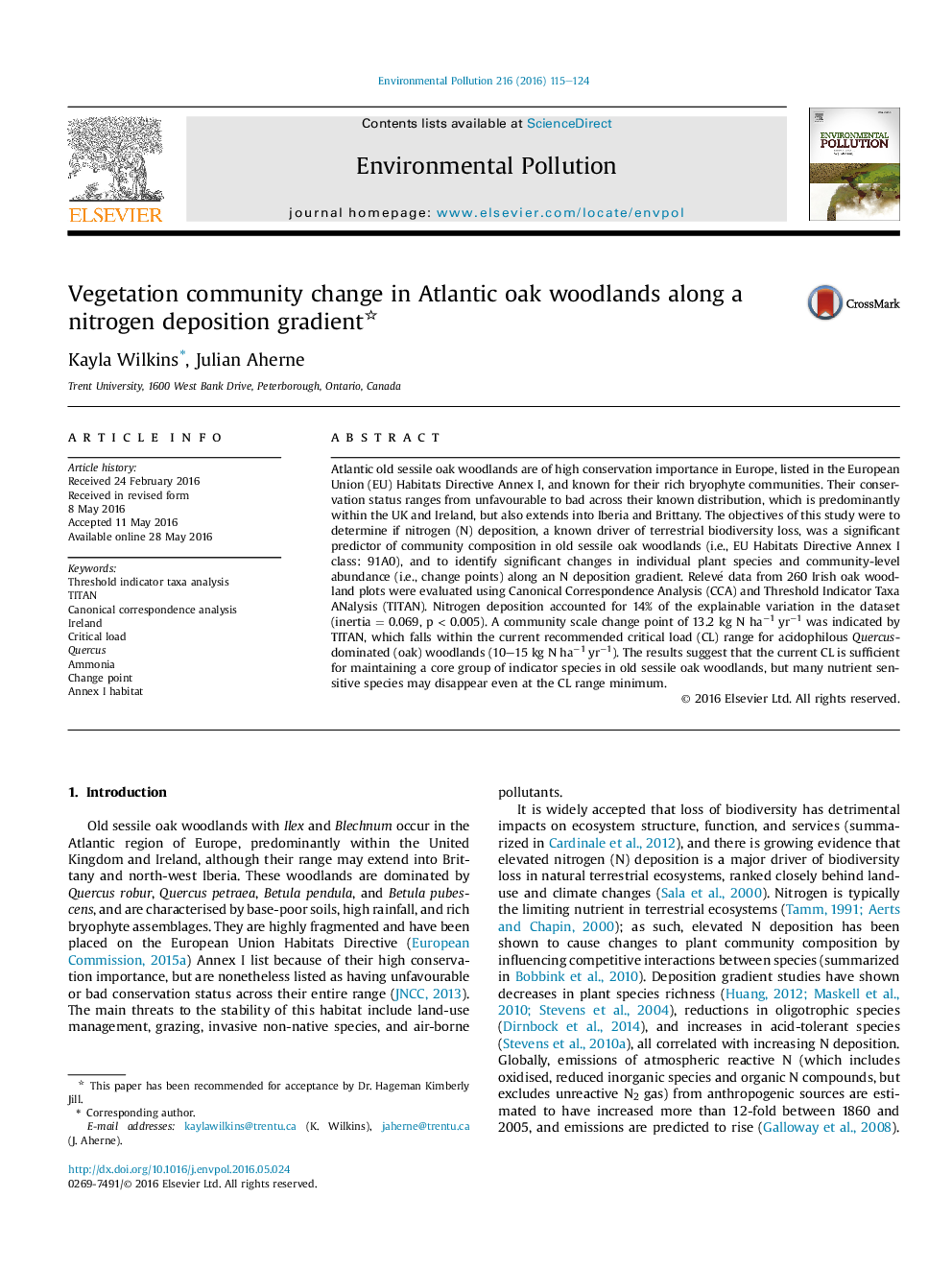| کد مقاله | کد نشریه | سال انتشار | مقاله انگلیسی | نسخه تمام متن |
|---|---|---|---|---|
| 6315783 | 1619157 | 2016 | 10 صفحه PDF | دانلود رایگان |
- Nitrogen deposition was a predictor of Atlantic oak woodland vegetation community.
- A significant shift in community composition was identified at 13.2 kg N haâ1 yrâ1.
- This shift falls within the recommended critical load range for oak woodlands.
Atlantic old sessile oak woodlands are of high conservation importance in Europe, listed in the European Union (EU) Habitats Directive Annex I, and known for their rich bryophyte communities. Their conservation status ranges from unfavourable to bad across their known distribution, which is predominantly within the UK and Ireland, but also extends into Iberia and Brittany. The objectives of this study were to determine if nitrogen (N) deposition, a known driver of terrestrial biodiversity loss, was a significant predictor of community composition in old sessile oak woodlands (i.e., EU Habitats Directive Annex I class: 91A0), and to identify significant changes in individual plant species and community-level abundance (i.e., change points) along an N deposition gradient. Relevé data from 260 Irish oak woodland plots were evaluated using Canonical Correspondence Analysis (CCA) and Threshold Indicator Taxa ANalysis (TITAN). Nitrogen deposition accounted for 14% of the explainable variation in the dataset (inertia = 0.069, p < 0.005). A community scale change point of 13.2 kg N haâ1 yrâ1 was indicated by TITAN, which falls within the current recommended critical load (CL) range for acidophilous Quercus-dominated (oak) woodlands (10-15 kg N haâ1 yrâ1). The results suggest that the current CL is sufficient for maintaining a core group of indicator species in old sessile oak woodlands, but many nutrient sensitive species may disappear even at the CL range minimum.
Journal: Environmental Pollution - Volume 216, September 2016, Pages 115-124
